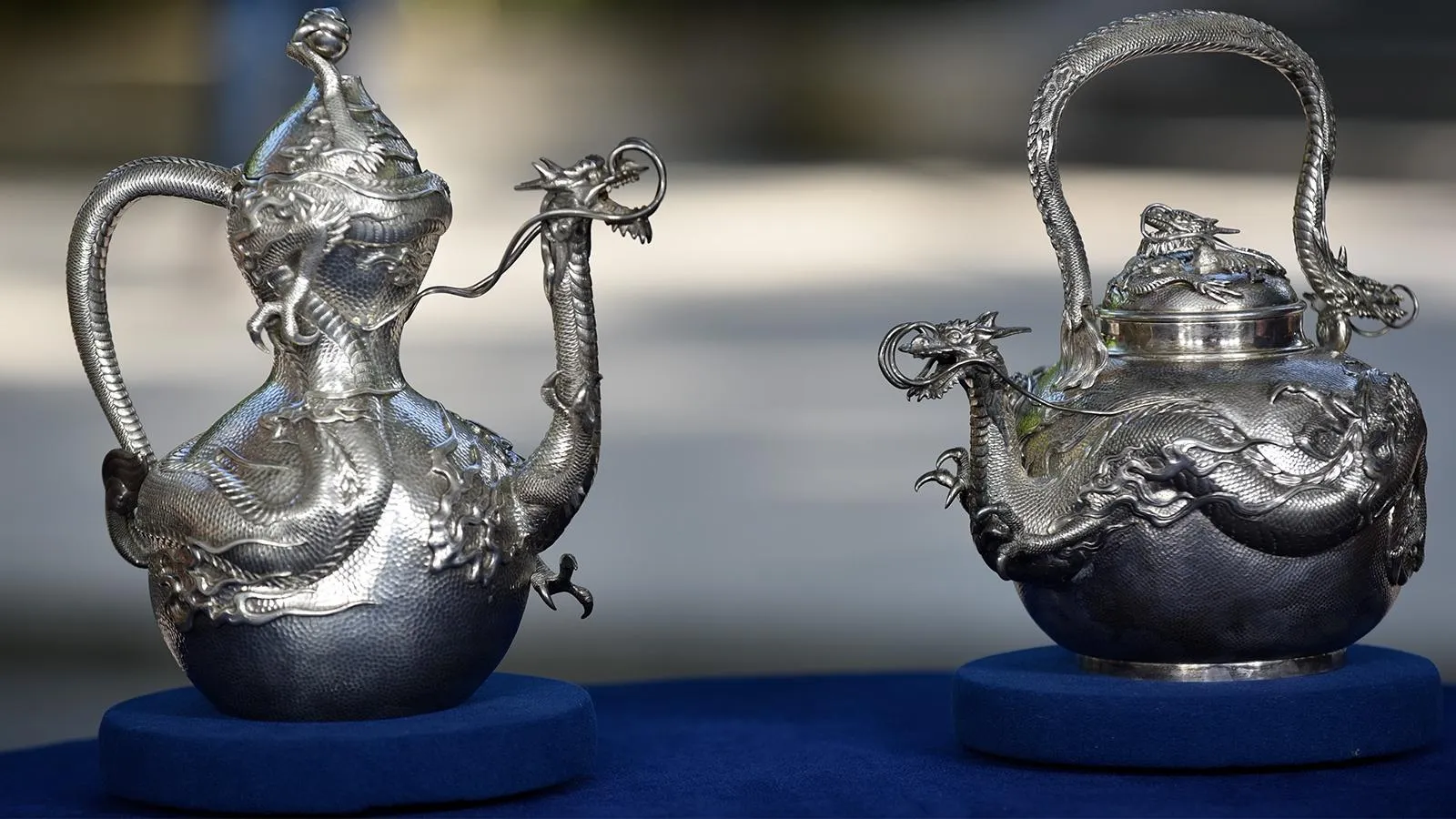APPRAISER: Tell us what you brought today.
GUEST: A Dover chest. I fell in love with it when I found it at the thrift store.
APPRAISER: How long ago was that?
GUEST: About two years ago.
APPRAISER: Really?
GUEST: I was at the thrift store, because it's right down the street. And I go there all the time, and I happened to be walking out and one of the employees was bringing it out, and I seen it, and I'm, like, "I have to have it." When I was looking inside of it I found a little piece of paper that said it was from Philadelphia.
APPRAISER: That is an interesting story. It's not quite from Philadelphia, but it is what we call a paint-decorated blanket chest or dower chest. And it was likely made in either Dauphin County, Lebanon County, or Montgomery County, Pennsylvania.
GUEST: Okay.
APPRAISER: And one of the ways we can tell that is by this sort of tripartite paint decoration. What's really interesting is the center panel here. I did some research and looked up "fede."
GUEST: Uh-huh.
APPRAISER: And that means sort of commitment or marriage.
GUEST: Okay.
APPRAISER: So that's why we get the name dower chest. And it's dated here 1785. If we open the chest up, you've got these wonderful strap hinges. These are original hinges from the 18th century.
GUEST: Oh, wow.
APPRAISER: I love how the edges are finished with this nice little chamfered edge. The wood that it was painted on is a combination of poplar and pine. It's got a nice well in here, and this is what we call a till. And it was a place to store valuables. The Pennsylvanian cabinet makers were famous for putting hidden spots, so you could hide your valuables. If you were a thief, looks like you've got only, only this area.
GUEST: Right.
APPRAISER: Where you would keep things. But if I raise this, there's these hidden drawers.
GUEST: It took me a couple of days to find those. (laughing)
APPRAISER: Did it?
GUEST: Yes, it did.
APPRAISER: Well, what I love about it, you can see, there's 18th- and early- 19th-century script which says, "Samuel Vanderlin."
GUEST: Okay.
APPRAISER: And if I turn it over... I even have something that says "John H. Lick." And then it says, "Fredericksburg, Lebanon County, P.A.," and it's dated 1814. So these are likely owners that it was passed down to. What I love about this... (drawer clattering) ...is the painted surface. And this is what we call fancy decorated.
GUEST: Okay.
APPRAISER: And it was basically to elevate the status of this chest. And I just love, if you look on these dovetails, there's these wonderful tulips, which were all symbols of the Pennsylvania Dutch, Pennsylvania German immigrants that brought this tradition. Now, the top is pretty worn, and we expect that. And in terms of condition, it's pretty good.
GUEST: Yes.
APPRAISER: I'm dying to know, what did you have to pay for this?
GUEST: I'm not exactly sure, but it was either $20 or $25. Because the gentleman that was taking it out front said that it gave him the heebie-jeebies.
APPRAISER: What?!
GUEST: Yes. On the inside was a wedding picture of a bride.
APPRAISER: Okay.
GUEST: And... I threw it away.
APPRAISER: What?!
GUEST: Yeah, I don't...
APPRAISER: Gave you the heebie-jeebies, too?
GUEST: No, actually it didn't. But I figured if it gave him the heebie... maybe, you know I shouldn't... So I tossed it.
APPRAISER: If this were to come to auction today, I would conservatively place an estimate of $3,000 to $5,000 on it.
GUEST: Wow!
APPRAISER: So that's quite a find.
GUEST: Wow! From a $20, $25 investment. (laughs)
APPRAISER: Not bad, right?
GUEST: Not bad, not bad.











